
Auto enthusiasts talk a lot (and complain a lot) about badge engineering, where automakers slap a few bits of unique trim on a car or truck and try to sell it under a different name or a different brand. It’s easy to decry this practice as the height of corporate cynicism, but it raises a question: Exactly how different does a vehicle have to be before it can really be considered a new and different product? One of the best test cases is the 1967 Mercury Cougar, a gussied-up pony car that attempt to fill the gap between the popular Ford Mustang and the pricier Thunderbird.

When the Mercury Cougar debuted in the fall of 1966, the Lincoln-Mercury Division proclaimed it not only a new car, but a new kind of car: “the personal luxury car with a sporty European flair,” allegedly offering “a new high in luxury features.” Lincoln-Mercury product planners trotted out their market research and demographic reports, showing that there was a sizable market for a compact, sporty luxury coupe, a Thunderbird-ish car at a Mustang-ish price.

That was all very romantic, but the reality was more prosaic. The development and tooling budget for the T-7, as the Cougar was initially known internally during its development, was a modest $40 million, so it couldn’t really be that different from its Ford sibling. (For comparison, the budget for the 1965 Mustang was reportedly about $75 million.) Mercury had fewer than half as many dealerships as Ford Division did, which meant the Cougar also needed to be profitable at a smaller sales volume, and the easiest way to accomplish that was with a higher price.

This wasn’t a terrible proposition, all things considered. The Cougar did have to use the unitized Mustang platform, stretched a bit for a 3-inch-longer wheelbase, but there was enough money in the budget for almost entirely new sheet metal and a new dashboard.

The higher price point ($284 more than a V-8 Mustang hardtop) was also enough to justify some additional styling gimmicks, including vacuum-operated concealed headlights and Thunderbird-style sequential turn signals.

Also, since the Cougar was based not on the original 1965 Mustang, but rather the redesigned 1967 version, the Mercury shared in the updated platform’s mechanical improvements, including a better-isolated suspension. Lincoln-Mercury was able to further improve that platform’s refinement with a big dose of additional sound insulation, an articulated joint for each front drag strut (to increase the front wheels’ ability to shift fore and aft in response to vertical bumps), a voided bushing for the front shackle of each rear leaf spring, and longer rear springs. Many badge-engineering jobs and “twins and triplets” (as such platform-mates were sometimes called in Japan) have had far less to work with than that.

Still, for all the Cougar’s points of distinction — and it did have quite a few — I have a hard time believing that most contemporary buyers didn’t immediately recognize that it was related to the Mustang. Mustangs were everywhere in 1966 — 540,802 new ones were registered in the U.S. in the 1966 calendar year alone, a domestic market share of about 6 percent. If you happened to see a new Cougar on the street, there was a good chance there was a Mustang somewhere nearby to compare it to.

This familiarity didn’t do the Cougar any harm: 1967 production totaled a very respectable 150,893 units for the model year, which made the Cougar the best-selling car Lincoln-Mercury offered. (It outsold all the full-size Mercury models by more than 20 percent.)

If anything, the Cougar might have done the Mustang a bit of harm. Mustang sales were down about 22 percent for 1967, and while a lot of that was undoubtedly due to the new Chevrolet Camaro and Pontiac Firebird, I’m sure some Mustang buyers were lured away by the Cougar.

Thirty percent of Mustang buyers in 1967 still chose a six-cylinder engine, which the Cougar didn’t offer. The Cougar also wasn’t offered as a convertible (although one had been considered) or a fastback. However, if you were considering a fully loaded Mustang with automatic, air conditioning, and all the trimmings, you might well be tempted by the Cougar, particularly following the launch of the fancier XR-7 in January 1967.



Some buyers may have been swayed by the Cougar’s styling. Even if you saw it as just a fancy Mustang, the concealed headlights and electric shaver front and rear grilles were rather cool. I like the look a lot, except that even slight misalignment of the headlamp doors can make the Cougar seem a bit snaggle-toothed. (It could have been worse — the full-size styling mockup shown below, photographed in 1964, shows how the Cougar might have looked with this grille and exposed headlights — yikes!)

Since the Cougar was a fair bit more expensive than the Mustang, it was obliged to justify its higher price, which it mostly did: The extra 235 lb of curb weight didn’t do performance any favors with the 289 V-8, but the Cougar was quieter inside than a Mustang, it rode a little better, and the extra 3 inches of wheelbase got you 2.6 inches more legroom (0.7 inches in front, 1.9 inches in back). The XR-7, which cost an additional $231.41, gave you leather upholstery, woodgrain trim, full instrumentation, and some extra convenience items.

As much as Ford and Lincoln-Mercury market research emphasized the critical mass of the Baby Boom generation, the Mustang was a big hit in part because it sold well with older buyers as well as younger ones. The Cougar was still the same kind of thing in concept, proportions, and size (although it was 6.4 inches longer than the Mustang), but it looked and felt a little more grown-up. That obviously had some appeal, even if the car ultimately wasn’t very different from the Mustang.

The Ford Mustang was still so popular in 1967 that Lincoln-Mercury could probably have sold just about as many cars by simply offering a Mustang clone with Cougar emblems in place of running horses. (Imagine a Mercury version of the Mustang deluxe “Pony Interior,” with vinyl trim embossed with stalking cougars — the Kitty Interior?) I’m sure Ford Division wouldn’t have appreciated that very much, but the corporation would probably have been happy enough to sell one of its most successful contemporary products through an additional 2,500 dealerships.

Conversely, if the Mustang had been a lukewarm seller, or an outright flop like the Rambler Marlin or Plymouth Barracuda, the Cougar probably would have been too. Whatever its actual virtues, I think the main reason the Cougar worked commercially was that it was a variation on an already-popular theme. In America, there’s often a market for products that are a little different, but not too different. A little different can be sign of discernment; too different is risky, and might just brand you as a weirdo. The Cougar managed to walk that line well.

Conventional wisdom in nearly every discussion of Mercury insists that Ford should have done more to differentiate Mercury products from Ford ones, to better cement a Sloanian brand hierarchy of a kind that was already basically obsolete by the 1960s.

However, if you set aside this fixation on the platonic ideals of Brand Integrity, it’s clear that the products that Mercury dealers were best able to profitably sell during the brand’s 72-year run were variations on popular Ford models: the Comet, the Sable (above), the Grand Marquis (below), later the Mountaineer. They were a little bit different from their Ford equivalents, enough to make them distinguishable at a glance, but not so different to turn off buyers who liked the Ford versions — or to put their prices too far out of reach for Ford customers.

The original 1967–1968 Mercury Cougar stands out not because it was unusually distinct from the Mustang on which it was based (it wasn’t), or because it offered dramatically more than the Mustang (it really didn’t), but that it had a clear idea of HOW it was supposed to differ from the Mustang, and it mostly delivered on that promise, within the realistic limits of its price. (The original list price of the air-conditioned Lime Frost XR-7 pictured below was around $4,400.)

The Cougar wasn’t a budget Aston Martin or a poor man’s Jaguar, whatever the marketing people or stunt-happy buff books would have you believe, and it wasn’t yet a Mercury version of the Thunderbird, which it became later. However, considered as a posher, more grown-up Mustang, the original Cougar was very appealing, and it still is today.
Related Reading
Vintage Review: Car Life’s 1967 Mercury Cougar – Finesse In Fabrication (by Rich Baron)
Curbside Classic: 1967 Mercury Cougar GT – Wild & Beautiful (by Joseph Dennis)
Vintage Comparison Test: 1967 Jaguar 420 Versus Mercury Cougar XR-7 – Which Fabulous Feline Would Be Belle Of The Ball? (by GN)
Vintage Car Life Review: 1967 Ford Mustang 390 Fastback – All The Toppings, Not Enough Mustard (by me)



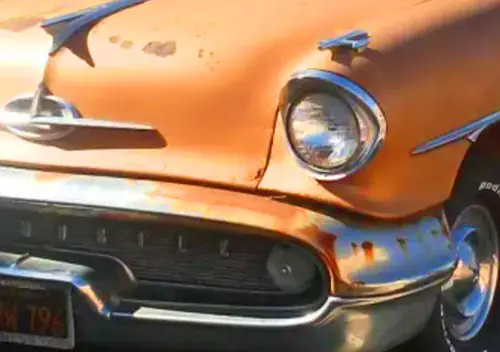
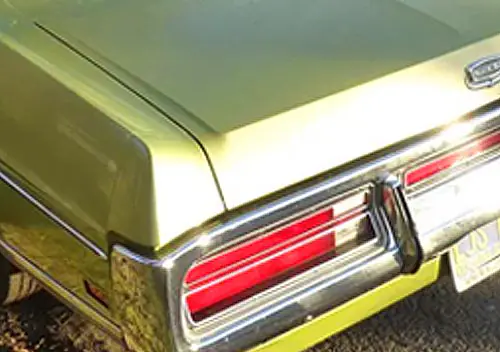
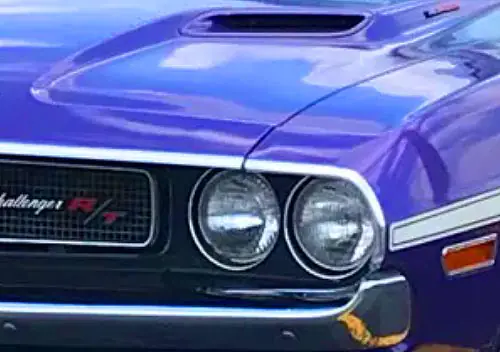


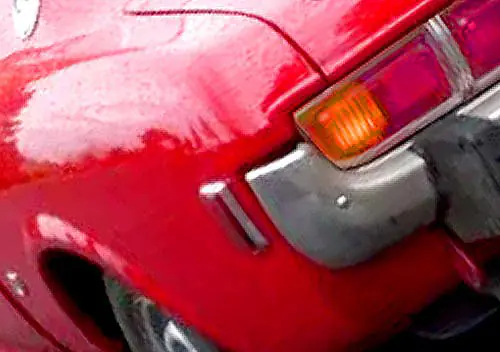

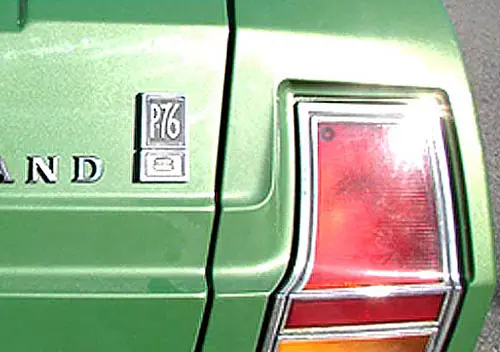
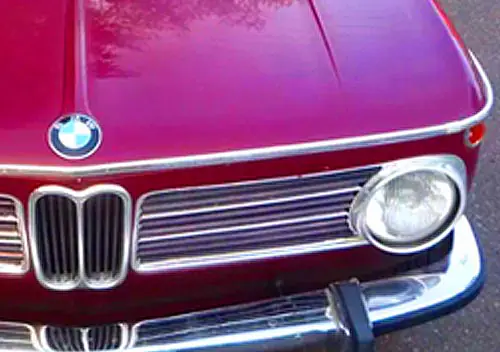

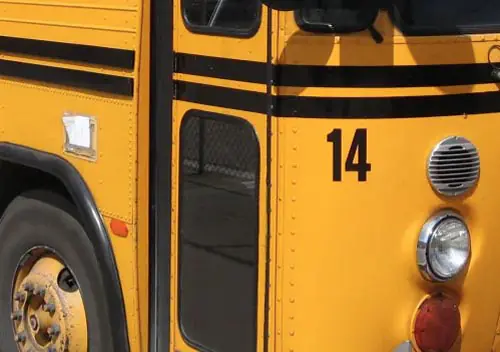
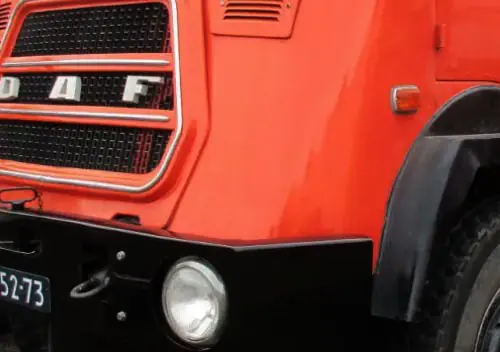
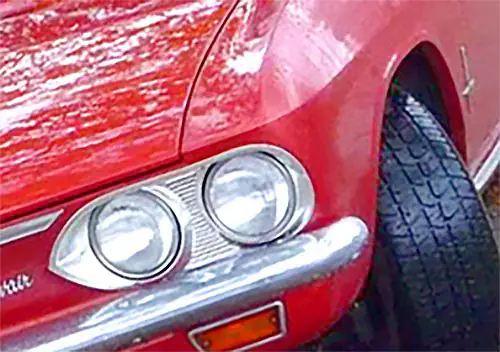
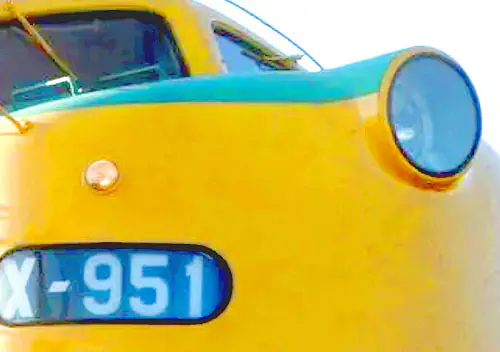
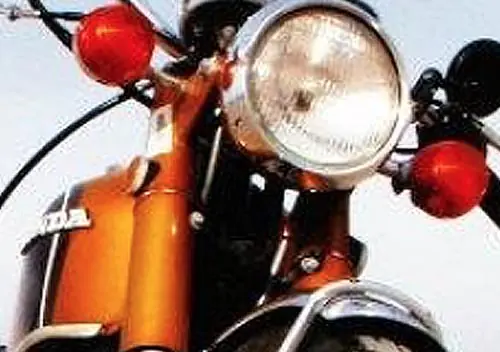
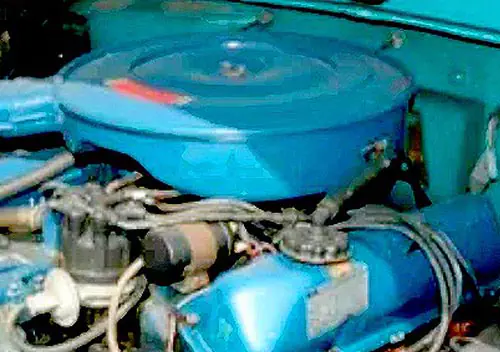
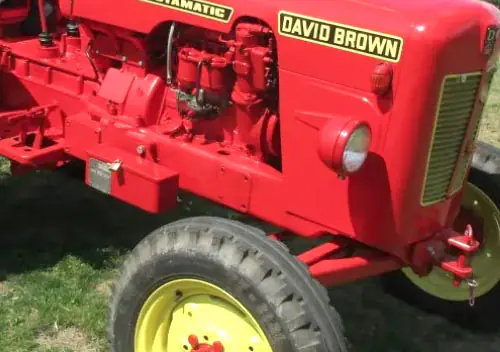
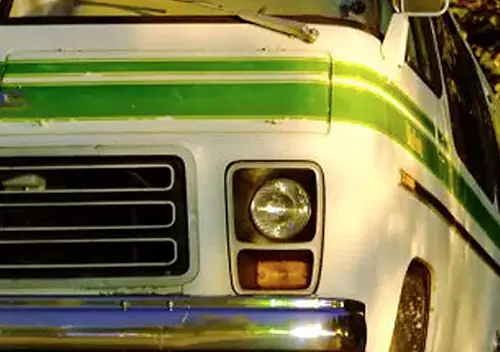

The rear three-quarter view towards the end of the piece has very strong Mk 1 European Granada vibes.
I’m pretty sure this butt served as inspiration for the Euro-Ford people when designing the Granada Mk I.
Pictured: A rare Granada Mk I two-door sedan (image taken from the www).
Interesting thought – my take was that the side profile view had some German Ford Taunus vibes.
Looks good a shown though, and those grilles and lights are fantastic
“Lincoln-Mercury was able to further improve that platform’s refinement with a large dose of additional sound insulation, …”
Is someone out there to specify exactly what the aforementioned “large dose of additional sound insulation” consisted of ?
Principally fibrous sound insulation, glass fiber insulator pads, and spray-on mastic, plus an additional layer of jute in the front compartment floor and factory undercoating, in all totaling about 56 kg.
I think the original Cougar is the perfect example of how to make a worthwhile variation on a popular car that balances cost savings while giving the car its own unique character. Half the battle is making the variant different, and the other half is giving the variant its own appeal. Every later generation of Cougar muffed the second half.
As a kid I could look at a Galaxie 500 and a Monterey and know they were basically the same car. I never got that vibe from Mustang and Cougar.
I thought the ’63-’64 Mercurys with the Breezeway roof managed to look quite distinct from the Fords. Sure, I knew what they were, but at least they weren’t boringly similar.
Name recognition and brand equity is a big thing, and it makes sense that two of the most notable in recent memory have been specialty cars like the Dodge Charger and Mercury Cougar.
Supposedly, Iacocca and Henry Ford II had a minor disagreement on the focus of the Mustang, with Ford wanting something much closer to a mini-Thunderbird. Iacocca won out with the Mustang as jack-of-all-trades (the Pony interior notwithstanding), but tactfully satisfied HFII with the Cougar when the Mustang became a hit. And, truth be told, things went pretty well for the small PLC from Mercury. Of course, it would later get even closer to being Mercury’s version of the Thunderbird in the broughamtastic, PLC-crazy seventies.
But when brougham dropped out of fashion, Ford bounced the Cougar name around next to the Fox platform with a not-so-great model line of a traditional two-door, four-door, and even station wagon. The market reception for those was lukewarm, and I wonder if Ford would have done better to shift the Cougar back to its traditional place of a badge-engineered Fox Mustang instead of going with the Capri nameplate.
The Cougar stayed with the Thunderbird base for its next iteration with an odd, formal backlight mated to the Aero Bird’s wind-cheating sheetmetal. It was so bad that, although it wasn’t a factory option, plenty of Mercury dealers were more than happy to slap on an aftermarket vinyl roof (mostly in places like Florida).
The final generation Cougar was based on the Ford Probe, which makes sense since, originally, that’s what the RWD Mustang was supposed to be. The styling of the Probe-Cougar wasn’t really bad, just a bit ‘edgy’, and indifferent sales meant it would be the last Cougar.
It’s a shame Mercury is gone because the Cougar name still holds potential. Maybe something like a Lincoln Cougar based off of the Mustang Mach-E.
The final Cougar wasn’t Probe based, it was based on the Contour/Mondeo.
This Cougar is my favorite Cougar, by far. I would be curious to know what exterior parts were the same as a Mustang.
The only sheet metal stamping that’s actually shared is the decklid inner. (The decklid on the 1967 Mustang and Cougar is two pieces, an inner and and outer; the inner is common, the outer is not.) I think the glass (windshield, side windows, vent windows, backlight) is all common as well.
Not the quarter windows, but the windshield and door glass, yes. The backlite I’m not sure about. I think the rear valence panel is the same too.
XR7 Memories.
I grew up living year-round in Virginia Beach, with an annual influx of regular “two-week” house-renting vacationers from Richmond and Lynchburg. My father was a Naval officer and my mother taught school; they’d lucked in to a rambling cottage a few doors from the Atlantic that would obviate the need for family vacations. What a dad move.
We were the only year-rounders on our stub street — a solidly pragmatic, middle-of-the-middle-class family of seven, piloted to school in used hand-me-down Ford wagons from my grandparents in New Jersey — and new-ish Volkswagen Beetles, the latter leaving my brother and I to pray earnestly that VW would one day discover roll-down windows for the rear passengers. VW’s timing was such that I had long unsubscribed from the Catholic church by the time a Dasher allowed manual control of passenger fenestraction.
In the meantime, every summer, families would stage in, two weeks at a time, educating us to the various other available American life-styles. The cabanas across the street from their rental were owned by local old money, and the parking lot was populated with bulbous black Cadillac and Buick sedans. But this husband and his wife were of the Sixties: an elegant, sporty and very successful couple with three toe-headed prep-school boys, thankfully around my age. She drove a Mercury station wagon with full faux wood siding, which I suppose allowed him the far less practical lime metallic green Cougar XR-7, just like the subject car, beautiful wood dash, AC, power windows, lovely toggle switches — and all. He could have been the President, for all I knew. The Cougar telegraphed everything about a certain lifestyle: discerning, established but independent, a nod to Europe and slightly rogue-ish… youthful if not entirely young.
Subsequent summers, the mother would arrive with the boys… in a metallic blue Pontiac Lemans wagon from the colonade era, its faux wood more vistigial, struggling to keep pace with the car’s lower contour gymnastics. The father starting skipping the summer vacations; they would eventually divorce, which was at the time was still significant, but not uncommon.
PS: Aaron, I love reading your articles; they’re exceedingly thorough, fun and insightful.
Really enjoyed your story. I grew up in a “land of lakes” area in northern Indiana and had similar experiences with summer folks coming in from the big cities with fancier cars and lifestyles that I could experience vicariously. One correction: if the green Cougar of your friends was a 1967 – IRRC power windows did not become an option on Cougar until 1969.
Always felt the 1st gen Cougars really hit the mark and a distinct market, very differentiated from the Mustang demographic. They blew it with all the later versions which rapidly became irrelevant. Would not have minded a ’69 in lieu of the 122S that we bought in 1970, but in the end the Volvo was the much more rational choice.
A surprisingly effective “reskin” of the Mustang. Although some folks may well have known of its origins, the Cougar managed to look surprisingly distinctive and I’d say quite a few actually didn’t readily know what it really was. Or didn’t care, as it conveyed a distinctive enough presence and image. It was a well-done job.
And the XR-7 interior was very attractive at the time, managing to effectively convey a Jaguar vibe.
Ford pulled off a coup with the Cougar, and it’s interesting that GM never really tried to counter it in its original format.
Our best friends bought a Cougar, I think the first year. She was enamored by the sequential tail lights, he by the idea it was a step up from the Mustang. They loved their first new car, but after a few months, the paint between the hood and the windshield began peeling. It seems Ford/Mercury, to prevent rust, galvanized that panel, but didn’t figure out a way to get paint to adhere to zinc.
Oddly enough, in future years, every car that guy bought was a horrible lemon. It wasn’t until they divorced that she finally found a car that was relatively trouble-free.
But it was a good looking Cougar!
About the time I started to drive my father bought a 67 Cougar XR7 very similar to the one pictured in the article. It was lime frost with a white painted roof. It had the unique for 67 turbine style wheel covers (these became standard on XR7s in 68) that were part of the Dan Gurney Special package that also included F70x14 Firestone Wide Oval tires with a thin stripe white wall, an engine dress-up with chrome plated valve covers and air cleaner lid and a decal on the driver side rear quarter window that said “Dan Gurney Special.” It had the A code 289 4V, automatic transmission, air conditioning, power steering and manual drum brakes.
Although the differences between the Cougar and Mustang may seem minor, the sum of the changes produced a car that was vastly superior to all the other “Pony” cars offered that year. The May 1967 issue of Consumer Reports tested what they referred to as 5 Specialty Cars: Cougar, Mustang, Barracuda, Camaro and Firebird. In summing up they said: “the difference between the top rated car in this group, the Cougar, and the bottom rated car, the Firebird, was as great as in any group of cars CU has tested this year. In comfort and ride, particularly, the cars are in different leagues”. And if you think this came at the cost of handling CU said: “the purchaser attracted to a specialty car by its sporty looks may be expecting something close to the quick and precise handling of a true sports car. The Cougar, in our judgment, is the only car that might live up to such an expectation. In our opinion, the handling ranks second only to the Chevrolet Corvette’s among US cars we’ve tested recently.” As to first hand experience, I had a friend in the neighborhood whose father was a used car dealer. He had a 68 Firebird Sprint with an OHC6 and 4-speed at one point and I can attest to Consumer Reports’ findings.
The Cougar became my car and by 1977 although still running strong the front suspension was worn out. Knowing that the Cougar shared suspension components with the Lincoln Versailles, I purchased upper and lower control arms for a Versailles. The only modification needed was drilling an additional hole in the lower arm to accommodate the articulated strut rod that was only used on the 67 Cougar. I then installed a set of Gabriel Strider adjustable shock absorbers and a set of Michelin 185-14 tires. The Cougar rode and handled better than new.
I continued to use the Cougar as my daily driver until it was stolen in 1983. I so liked 67/68 Cougar that I set about finding a replacement. I ended up with what I considered the ultimate Cougar, an XR7 7.0 Litre GT-E.
Pictured here a concours correct restoration of the 427 I saw today.
Next to it was this. Later, while relaxing I heard the V-10 start up. So we had to go look and I find out that the owner let my 16 year old start the car. Then the club member took out a 35 year old who was fascinated by the car and no matter how far away the car you could easily hear it a mile away in sport mode.
The Lamborghini Huracan Sterrato
I wouldn’t consider this badge engineering at all.
One of the best(?) examples of badge engineering was the 74 thru 87 Chevrolet and GMC pickups. Once the GMC V6 engines were discontinued the only stamping that was different was the skin of the tailgate panel. Many times we got new GMC pickups delivered with Chevrolet grills, badging or tailgates.
I consider the 67-68 Cougar the best — and best-looking — Mercury of all time. The electric shaver grille, hidden headlights and sequential turn signals are all fantastic styling elements that set it apart from the Mustang. I’d pick the Cougar over the Mustang is I was car shopping in 1967.
Interesting that the Firebird ranked last in the Consumer Reports comparison. Even though it was a rush job, I think Pontiac stylists did a good job and prefer its looks over the Camaro.
About the time I started to drive my father bought a 67 Cougar XR7. It was lime frost with a white painted roof. Ours had the Dan Gurney Special option consisting of turbine style wheel covers (these became standard on XR7s in 68), F70x14 Firestone Wide Oval tires with thin WSW, engine dress-up with chrome plated valve covers and air cleaner lid and a Dan Gurney Special sticker on the driver side rear window. It had the A code 289 4V, automatic transmission, air conditioning, power steering and manual drum brakes.
Although the modifications made to the Mustang platform to create the Cougar may sound minor, these changes made a car vastly superior compared to the competition. The May 1967 issue of Consumer Reports tested what they called 5 Specialty Cars: Cougar, Mustang, Barracuda, Camaro, and Firebird. In summing up they said: “the difference between the top rated car in this group, the Cougar, and the bottom rated car, the Firebird, was as great as in any group of cars CU has tested this year. In comfort and ride, particularly, the cars are in different leagues”. And if you think this came at the cost of handling CU said: “the purchaser attracted to a specialty car by its sporty looks may be expecting something close to the quick and precise handling of a true sports car. The Cougar, in our judgment, is the only car that might live up to such an expectation. In our opinion, the handling ranks second only to the Chevrolet Corvette’s among US cars we’ve tested recently.” From first hand experience, I had a friend in the neighborhood whose father was a used car dealer. He had a 68 Firebird Sprint with an OHC6 and 4-speed at one point and I can attest to Consumer Reports’ findings.
The Cougar became my car and by 1977 although still running strong the front suspension was worn out. Knowing that the Cougar shared suspension components with the Lincoln Versailles, I purchased upper and lower control arms for a Versailles from a Lincoln-Mercury dealer’s parts department. The only modification needed was drilling an additional hole in the lower control arm to accommodate the articulated strut rod that was used only on the 67 Cougar. I then installed a set of Gabriel Strider adjustable shock absorbers and a set of Michelin 185-14 radial tires. The Cougar rode and handled better than new.
The Cougar was my daily driver until it was stolen in 1983. I so liked the 67/68 Cougars that I set about finding a replacement and ended up with what I considered the ultimate Cougar, a 68 XR7 7.0 Litre GT-E.
So appropriate as tomorrow is the Cougar Club BBQ at a member’s estate. All 67-73 Cougars in 96 degree heat.
It’s a shame too few of these gems came with a four speed. I’ve always loved Cougars, but could t see myself driving one with only two pedals
Had automakers held themselves to this standard of badge engineering nobody would have ever used the term badge engineering. This is about as badge engineered from the Mustang as the Monte Carlo or Grand Prix is from the Chevelle.
Mercury as a brand always had a pedigree problem, GMs were often less differentiated than this across Buick Olds and Pontiac from Chevrolets on a given A B F X body platform, but they got their own unique division OHV V8s and more importantly for marketers had an actual history pre-GM(well except Pontiac being a spinoff of Oakland, but Pontiac too suffered a number of identity crises periods like Mercury without strong leadership), but Mercury just always seemed to have a mission statement of simply being a fancy ford or junior Lincoln without any distinguishing traits. There were blips of finding their way through the years like the 49s, the adopted Comet, the Cougar of course, and the first and second gen Sable, but one by one one way or another their successes would get squandered. The Cougar is an oddball as its greatest sales occurred after it was morphed into a truly badge engineered Montego and then spanned the entire intermediate line replacing the Montego, as if Mercury was emulating Olds’s success with the Cutlass in this era. Even as Mercury moved on from “sign of the cat” the ultimate demise of the Cougar seemed to leave the brand truly rudderless until it’s not too distant demise.
The styling of the 67-68s is interesting to me, most people tend to focus on the electric razor grille but if you pay attention to the bodyside sculpting it’s literally a refresh of the 64-66 (flairbird)Thunderbird. Most don’t like the direction subsequent restyles took, but look at the cars the Cougar was aspiring to. The 69 emulated the 67 Tbird, and the 71 emulated the Lincoln Mark III.
In a very uncharacteristic move my dad ordered one of these when they first came out. It was this colour, but not an XR7. Until the year before we had been a one car family with a 1961 Olds Dynamic 88, but after my older brother got his licence and I was about to get mine, my parents got a Corvair with a 4-speed so that we would learn to drive standard. The Cougar was to replace the Olds, and as a 16 year old I really liked it. I remember thinking it was a very quiet car, as mentioned here. Unfortunately my dad died about 6 months later and we sold the Cougar, so no long term reports.
I liked the ’67-’68 Cougar. I thought it was interesting that more effort was put into the Cougar to differentiate it from the Mustang that GM put into the Firebird to make it distinct from the Camaro.
I’ll bet that Ford Motor Company was being strategic knowing that Mercury Cougar pulling away a few Mustang buyers was better than letting them move to Chevy Camaro or Pontiac Firebird. If people are ready for a change, better provide a Ford Motor Company choice. Very glad that prototype didn’t make it to production instead of the 67 Cougar we got. I always liked the looks of this first gen Cougar. The 1980 Cougar my parents eventually got, not so much.
I have a soft spot for the first generation Cougar. My first “car” was a 1964 Ford Mustang pedal car (I was born the week of its introduction) and my second was a Hot Wheels Mercury Cougar. I probably still have it somewhere in a box of toy cars. As far as styling goes, nothing is missing and there’s not anything extra that should not be there. The hidden headlights and sequential taillights distinguish it from its competitors. It has aged well.